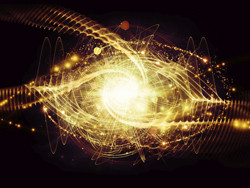Small particles as powerful probes of matter
The description of the Universe and the particles of which it is made has progressed significantly since Bohr's model of the atom. Manipulation of these particles provides insight into the nature of the Universe and helps address some of its most pressing challenges. EU-funded scientists exploited the unique properties of neutrons and muons, elementary particles similar to electrons. The project 'Integrated infrastructure initiative for neutron scattering and muon spectroscopy' (NMI3)(opens in new window) coordinated work at major European facilities, among the best in the world, for major impact. Neutron scattering and muon spectroscopy are very powerful probes to investigate materials from the sub-atomic to the mesoscopic scale. They provide invaluable insight into both structure and dynamics, and research describing them is published in the most prestigious journals, receiving numerous citations. European infrastructures in these two fields serve 9 000 global researchers in areas from fundamental physics to life sciences to cultural heritage. Realising the unique potential of European leadership and state-of-the-art facilities for sustainable competitiveness at a cost-effective price is best achieved with a coordinated effort. Transnational access was provided by 10 partners to accommodate 4 000 days of beam time. Joint research on six selected research areas fostered development of novel techniques and methods for next-generation instrumentation. Networking and cooperative management ensured a truly European perspective on all strategic decisions made, including standardising data collection and analysis. NMI3 supported numerous training schools throughout Europe and organised events to support interactions between infrastructure facilities and industry. Breakthroughs were relevant to fields from neutron optics to extraction and labelling of biological molecules, to high-pressure cells. Numerous publications have been delivered on developments with potential applications in energy, health, information technology, nanotechnology, environmental and earth sciences, and cultural heritage or archaeological objects. Europe is a global leader in development of neutron and muon research facilities. Effective coordination is required for continued international competitiveness at a sustainable cost. NMI3 efforts ensure that the potential of Europe's world-class facilities is fully exploited with benefits for the research community, industry and EU citizens alike.







